By Pete Vack
As we have reported earlier, Daniel Cabart and Gautam Sen have created the Ballot Bible, documenting the founder, the engineers, the heritage, the races and the cars. It is a huge work, with much new information, and in our three reports, we have barely scratched the surface. In this report we will describe the Ballot 2LS from Volume 1, and describe the scope of Volume 2.
A good part of the two-volume set is devoted to the sports and road going two-liter cars, which are not well known. These small Ballots were both interesting and advanced for their time, and in the case of the 2LS (Two Liter Sport), preceded the Amilcar and Alfa DOHC 1500 and 1750s in the use of the DOHC head in a production car.
Here is a brief description of the various cars made by Ballot:
5/8 LC and 3/8 LC In 1919 and 1920, Ballot created four 5 liter, eight cylinder race cars for Indy, and another four 3 liter eight cylinder cars for both Indy and European racing. These are covered in detail in Volume 1.
2LS In 1921, Ballot produced the 2 liter sport, or 2LS, with a Henry-designed DOHC head. Many were used as race cars. About 50 were built, six survive and are very highly prized.
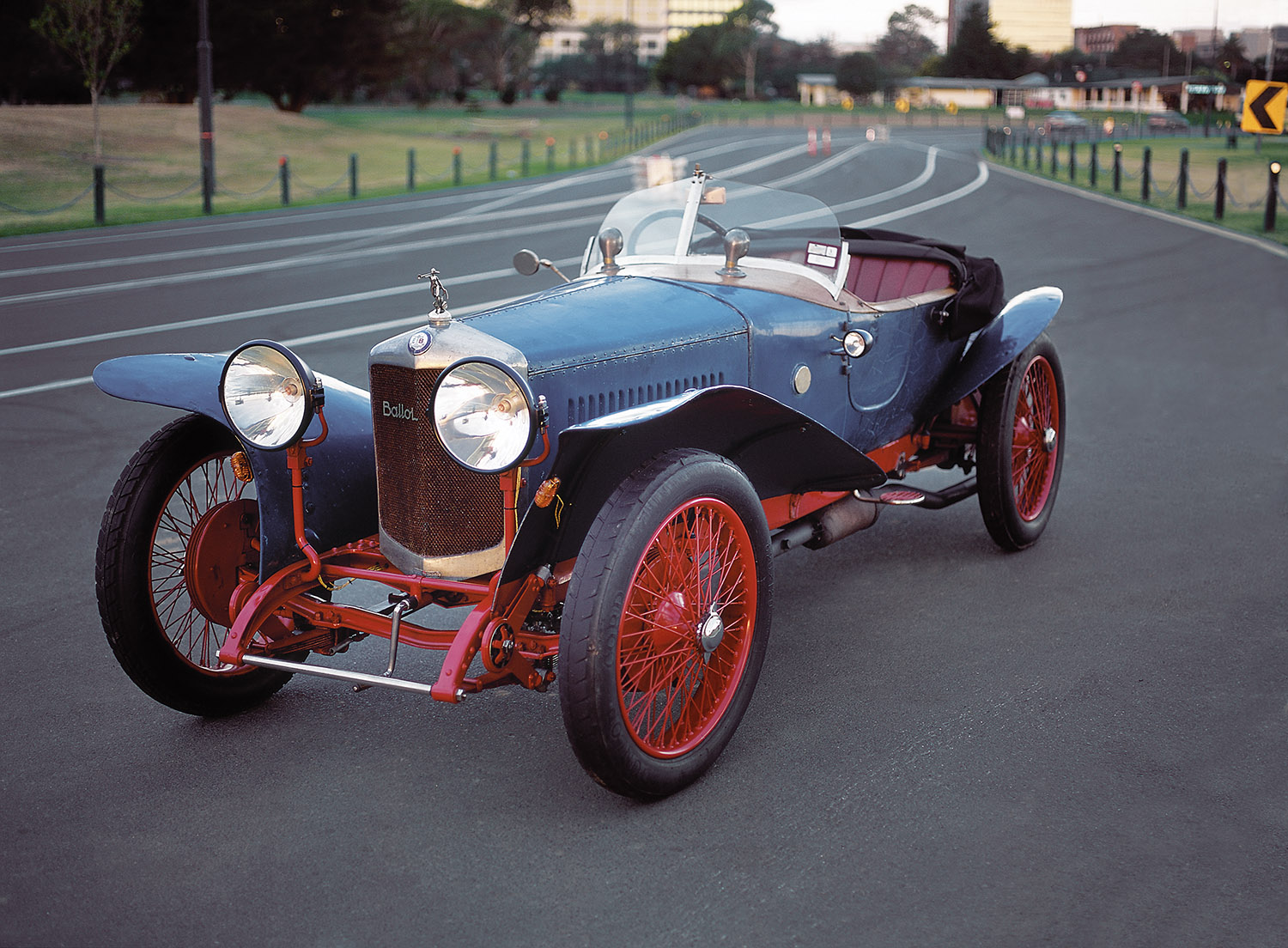
Ballot 2LS chassis number 16, first owned by John Lucas-Scudamore in the UK. He sold it to a John Norbury who kept it for a year before passing it on to Gordon Stewart McArthur in 1927. It remains in the McArthur family, now in Australia, to this day.
2LT At about the same time, Ballot introduced the SOHC 2LT, often confused with the faster but much more expensive 2LS; these engines were not designed by Henry, but by ex-Panhard engineer Louis Germain. Roughly 2000 were built, and the model is the most important Ballot passenger car made. Perhaps 50 remain.
2LTS In 1925 came the improved SOHC two liter, with a hemispherical combustion chamber and rocker arrangement similar to early Ferrari V12s. Roughly 600 were produced and perhaps 20 survive.
2LT Six A still-born SOHC 2 liter chain driven six prototype was built in 1926 but never went into production.
8 cylinder RH Still using the basic 2 liter chassis, Ernest Ballot secretly constructed a new straight eight, still with a SOHC but with a displacement of 2618 cc. It was not very successful and it proved to be Ernst Ballot’s undoing. About 600 were constructed.
HS-26 The last Ballot, built between 1931 and 1934, used a Hispano-Suiza engine, but the chassis was in-house Ballot, based on the RH. After the complete take-over of Ballot by Hispano-Suiza in 1932, the cars were named the Hispano-Suiza Junior. Most were built in the Ballot factory but about 30 were built in the Spanish Hispano factory in Sagrera, Spain.
The 2LS: The First Double Overhead Cam Production Car
In his book, The Classic Twin Cam Engine (1979), Griff Borgeson writes of the 2LS. “About a hundred of these small mechanical masterpieces were built, between 1921 and 1924. They constitute the world’s first twin cam productions sports car…”
Though the factory did not follow through on the initial competition successes, the 2LS was a potential winner. In 1922, a 2LS placed third at Le Mans, behind the much larger Duesenberg and Ballot 3 liter, at the Targa Florio Goux and Foresti finished second and third overall. Notably, the 2LS was designed by Henry, and virtually identical to the eight-cylinder cars but using a shaft and bevel gears for the cam drive.
The 2LS DOHC cars were essentially race cars, so the authors logically combined with the section on Ballot race cars in Volume 1. The special Ballot 2LS section was written by “The Automobile” publisher Doug Blain, who has owned two of the 2LS cars. In this in-depth chapter, Blain tracks the known existing 2LS chassis, with both historical black and white photos and recent color photographs, many by Makarand Baokar.
Volume 2
The authors have thankfully included just about everything known about the cars, the racing, and the engines, including statistics, technical sheets, owner’s opinions, catalogs, sales sheets, and road tests. The order is not always logical or clear, but there was no easy way to combine all the diverse elements of Ballot’s history. Here is a quick rundown of what constitutes Volume 2.
The Road Cars
As the 2LS is covered in Volume 1, Volume 2 begins with a full description of the SOHC 2LT, and continues with the 2LTS, the six and the eights. Each model is followed by a section on coachbuilders. Between the 2 LT and LTS models, 44 coachbuilders are listed, and the authors, amazingly, found photos representing 27 of those firms. Coachbuilder for the later eight-cylinder cars are also listed with many illustrations.
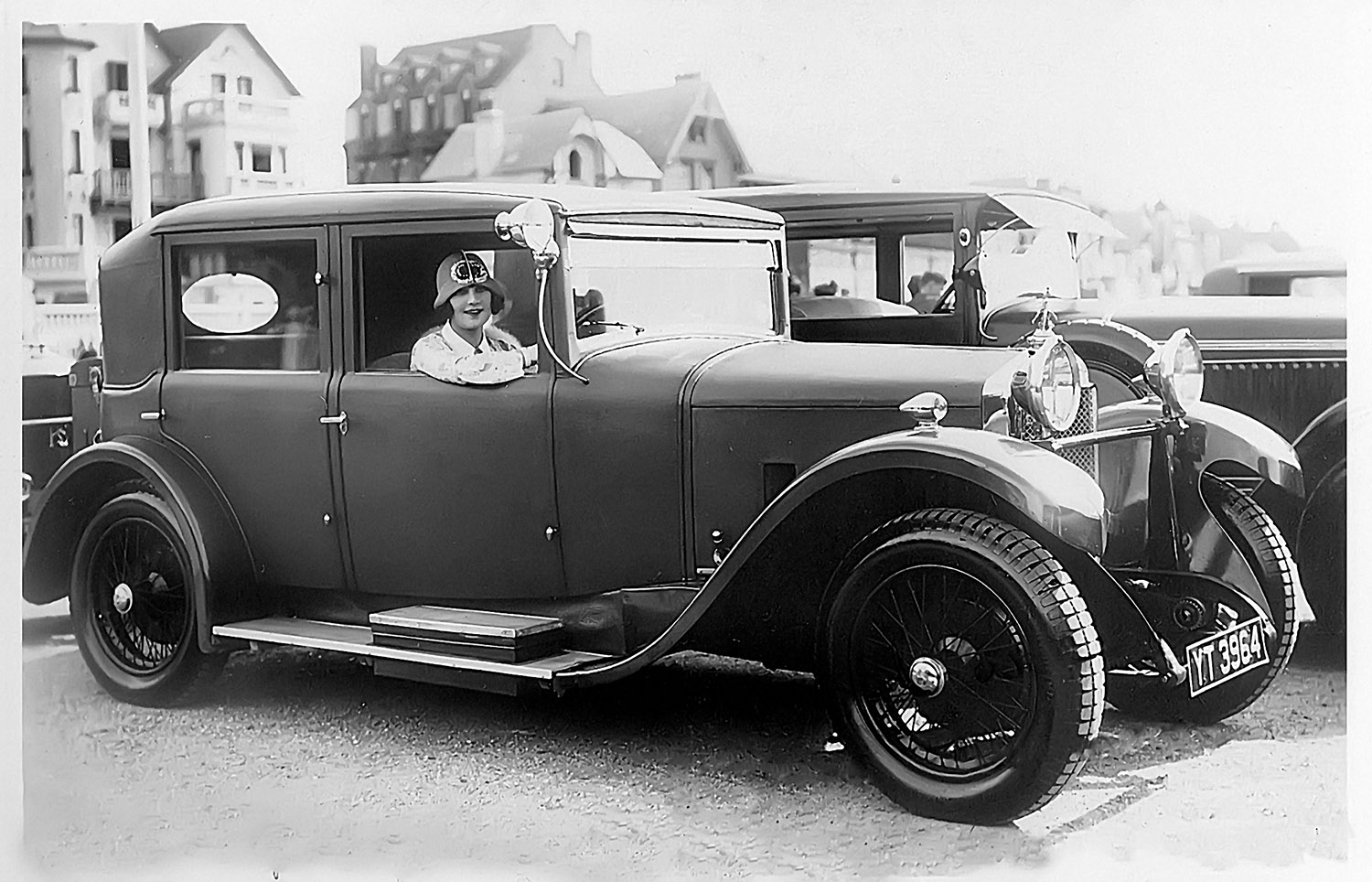
A 2TLS bodied by Vanvooren, with the wife of the UK Ballot agent, Mrs. Newman, driving. Vanvooren was one of 44 coachbuilders to clothe the road going Ballots.
Ballot Engines Everywhere
Having covered the story of the Ballot automobiles, the authors also include a chapter on the various Ballot engines used in marine, agriculture, aviation, motorcycle as well as ‘turnkey’ set ups with an engine and transmission ready to be set in any chassis, which made life simpler for budding car manufacturers (including Delage from 1909 to 1915).
Other manufacturers which used Ballot engines included Alba, Belga, David, Fournier and Sizaire et Naudin, and many more, most from France. There are original brochures used as illustrations. A most remarkable chapter!
The Ballot Legacy
We have already discussed Karl Ludvigsen’s chapter, “The Ballot Legacy,” in our previous reports.
Appendices
These are not just a few pages tacked to the end of the volume. These are nine separate chapters consisting of over 200 pages. To give our readers an idea of the depth, here are the appendix headings:
Ballot Racing Record, Brooklands Records, Magazine Articles, What the Owners Thought, Road Tests, Homologation Documents, Sales Sheets and Catalogs, Advertisements, Chronological Table of Ballot Company and Ernest Ballot, Patents Filed by Ballot.
The Sales sheets and Catalogs are often full color pages and the artwork is stunning. It includes a full color catalog of services offered during WWI, showing battle scenes, ships, and aircraft at war being supported by Ballot engines, again, the artwork and reproduction is superb. It seems that every article ever published in a French or English magazine has been reproduced. One of our favorite magazine articles was the “Care and Maintenance of the Two Liter Ballot” as published in The Autocar, April 12th, 1929 which show how to remove the head of a SOHC Ballot. Alfa Giulietta owners would easily relate and would be very much at home with maintaining a 2 Liter Ballot.
Even with three review articles, we find it difficult to describe everything that is in this magnificent two-volume set. We realize it is expensive, but if one could only purchase one book for the year, our choice would be Ballot. Once opened, the volumes many never find their way back to the slipcase.
Authors: Daniel Cabart and Gautam Sen, with David Burgess-Wise and Karl Ludvigsen
ISBN: 979-109026-303-9
Publication Date: Dalton Watson Fine Books, February 2019
Page Size: 219mm by 304mm 2 volumes, portrait
Hard, cover, with dust jackets and slipcase
Illustrations: 1650
Price: US$350
Call Dalton Watson: 1-847-945-0568 email info@daltonwatson.com
Click here to order your copy now!
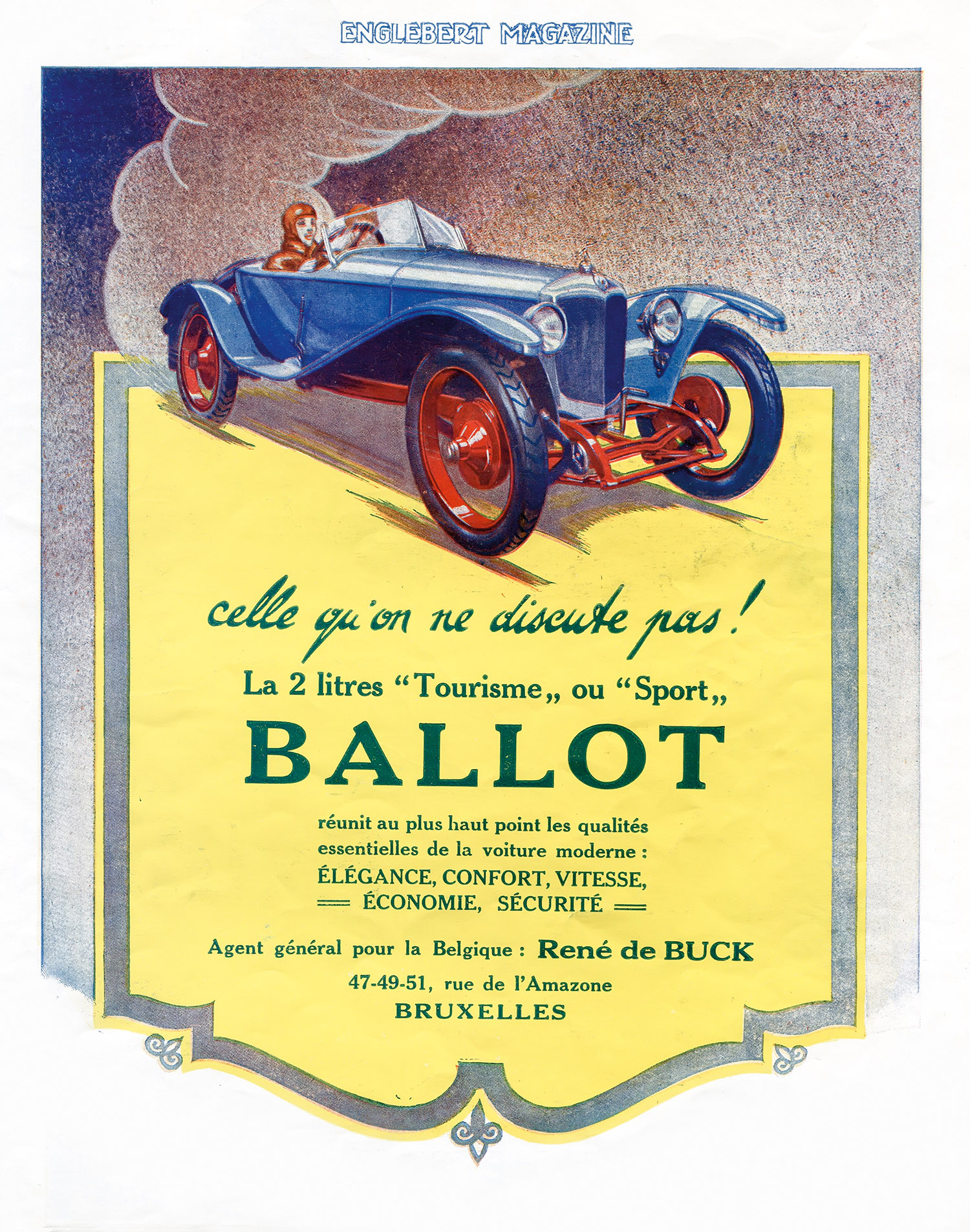
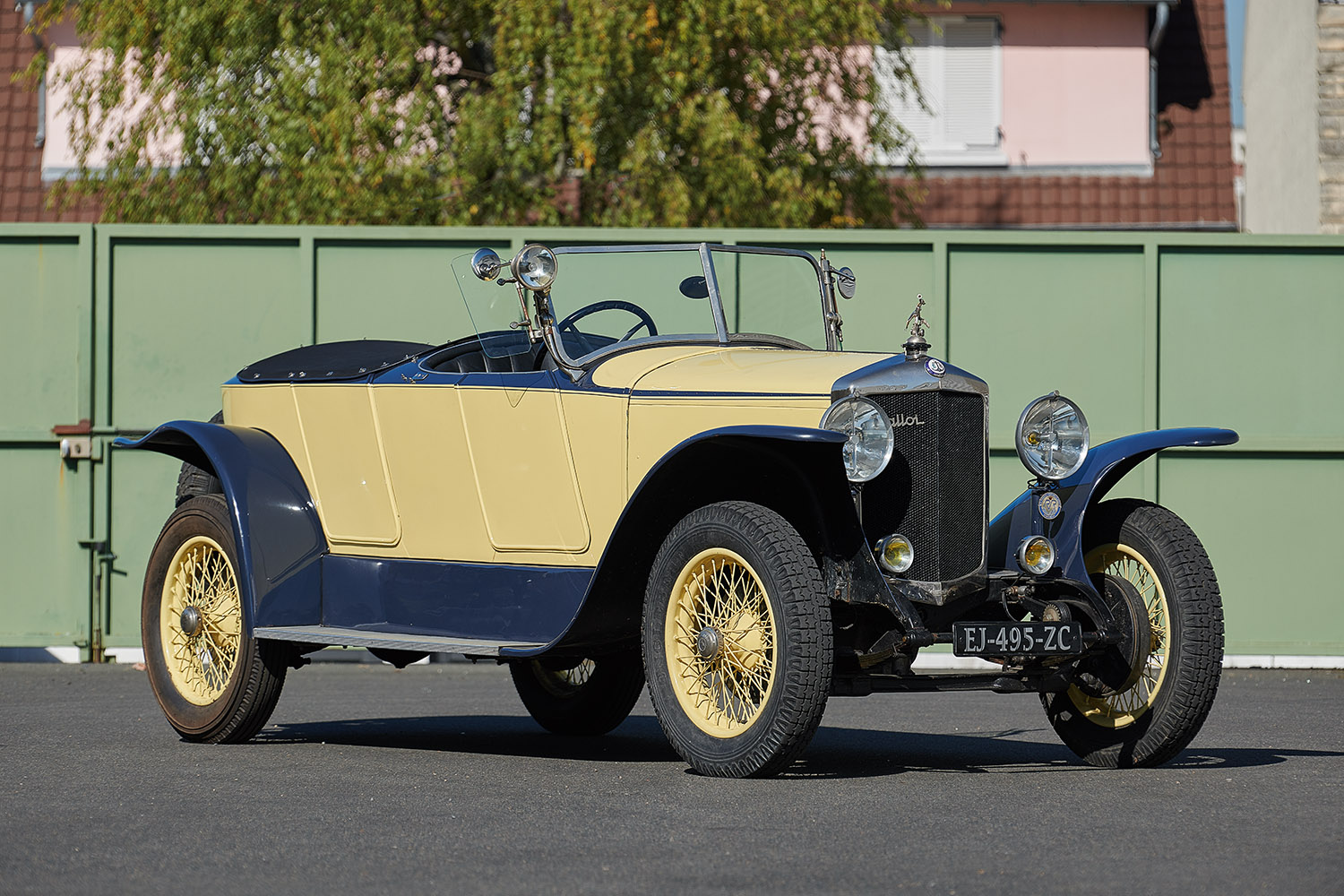
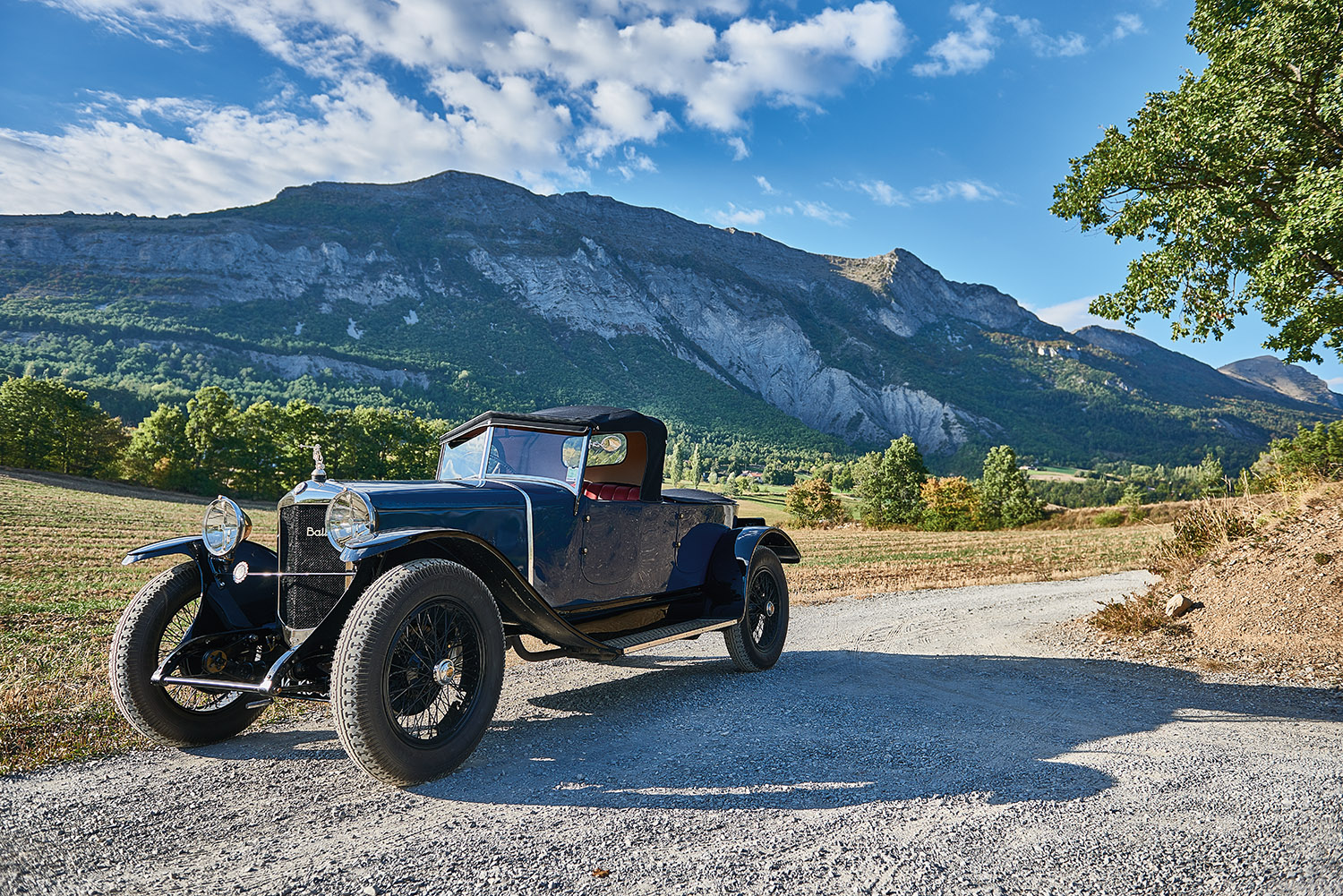
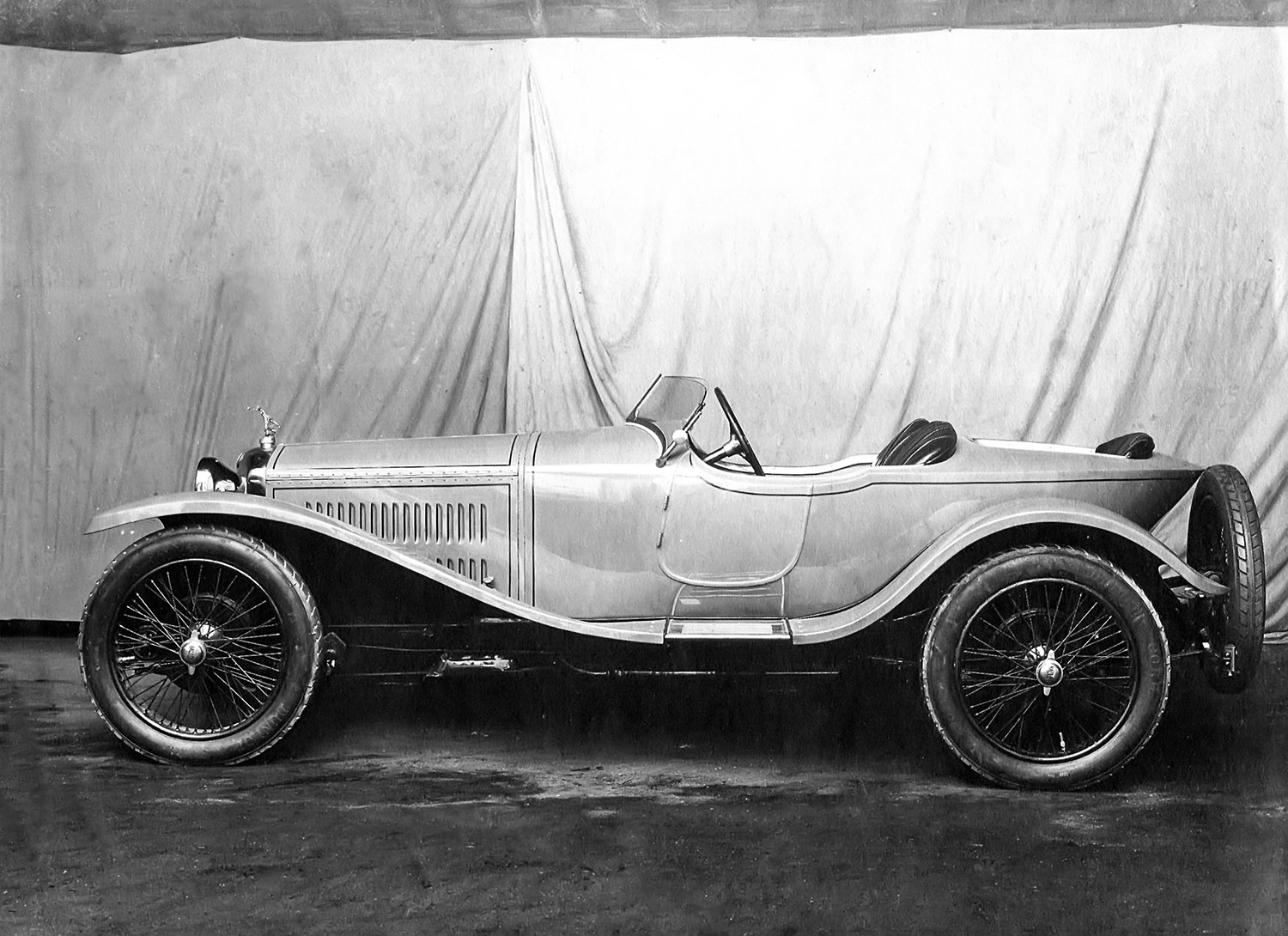
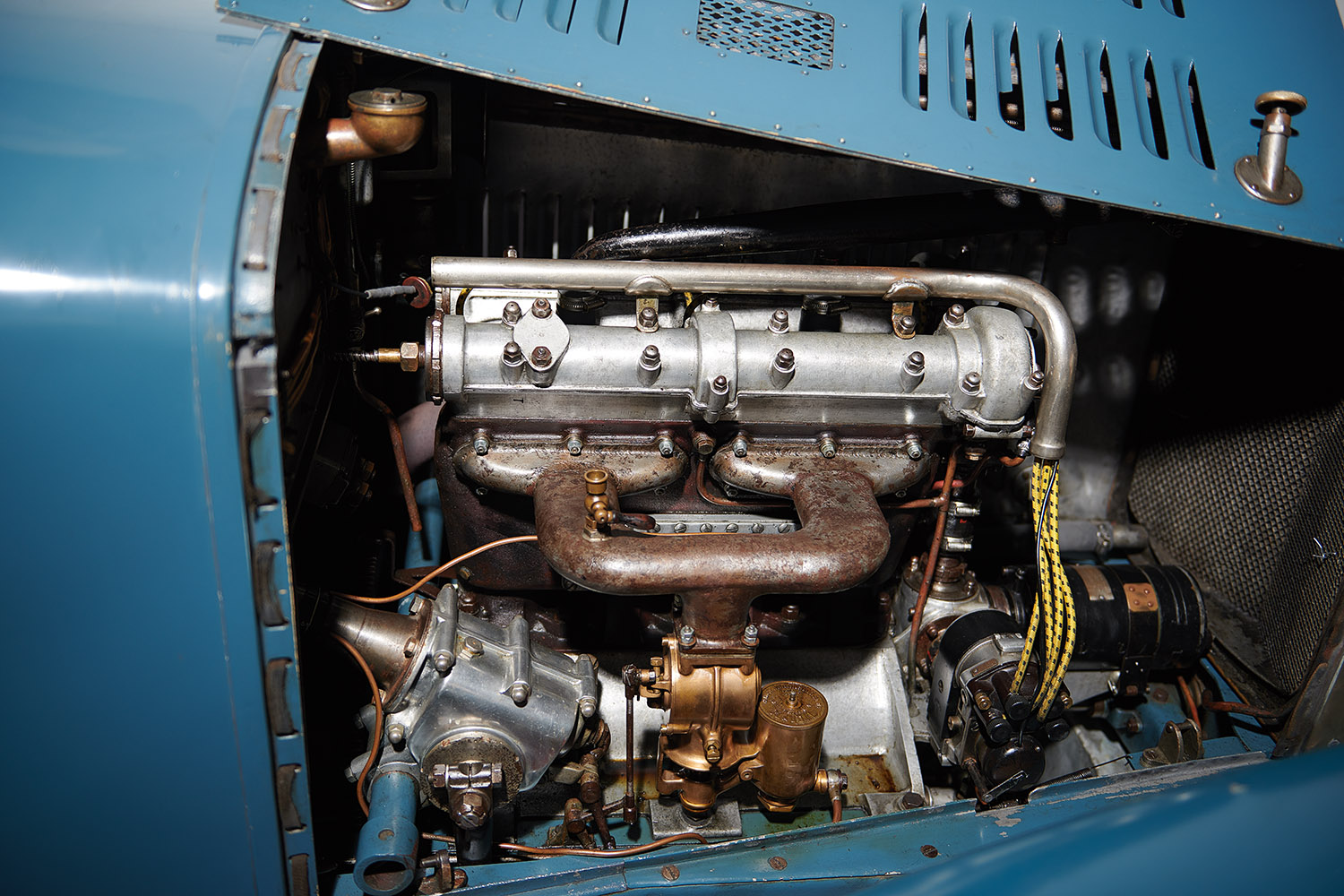
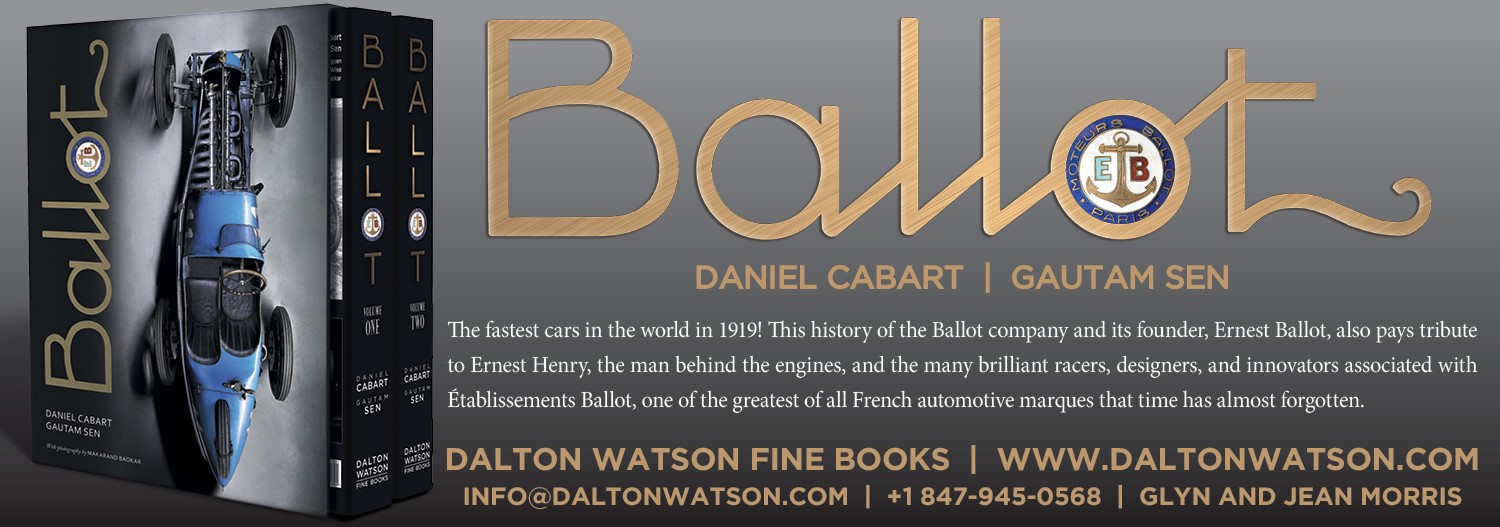
I got the Books recently, can not stop reading them. Ballot was a real pioner and exquisite automovil engineer in all sense. Its amazing to think that this racing stories were in the “dark”
This Ballot Discussion its a very interesting and professional article in addition to that . Chapeau for your publication. Thanks
It’s a wonderful book. Your review is spot on. Thanks.
The book is silent on the origin of the RH designation. I am very interested to learn if the letters refer to the engine size, cylinders or something similar to the 2LS – 2 Liter Sport.
We asked the authors but they are not sure either! Perhaps readers can help?
Editor